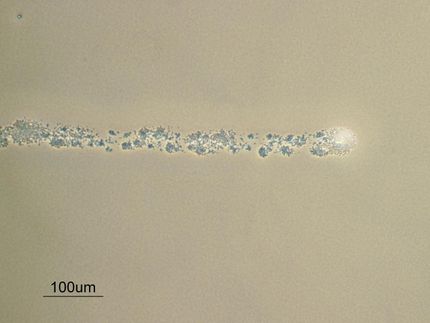Mapping the spread of diarrhoea bacteria a major step towards new vaccine
Every year hundreds of thousands of people die from diarrhoeal diseases caused by ETEC bacteria. A study published in Nature Genetics describes how Swedish researchers have mapped the spread of strains of ETEC bacteria around the world. It provides key information about how pathogenic bacteria arise, which will be important for the Swedish diarrhoea vaccine currently under development.
Researchers at the University of Gothenburg's Sahlgrenska Academy have made a major breakthrough in collaboration with colleagues from the Wellcome Trust Sanger Institute in the UK, Karolinska Institutet in Sweden and universities in Japan, Germany and the USA, among others.
A study published in Nature Genetics details how the Gothenburg researchers used comprehensive DNA analyses to reveal the ETEC bacteria's genetic composition – an analysis that also makes it possible to map how the bacteria spread.
"We can see that some of the dangerous strains of ETEC derive from a single bacterium that has divided and spread right around the world," says Astrid von Mentzer, doctoral student at the Sahlgrenska Academy. "This may sound like bad news, but it actually means that the vaccine that we are developing on the basis of the most common types of bacteria will be of global benefit."
The researchers were also able to demonstrate in the study that some of the ETEC groups identified came into existence as far back as 174 years ago. Astrid von Mentzer feels that this new information about the genetic composition of ETEC bacteria and how they spread means that we are a step closer to reducing the prevalence of diarrhoeal diseases worldwide.
Original publication
"Identification of enterotoxigenic Escherichia coli (ETEC) clades with long-term global distribution."; Nature Genetics 2014
Most read news
Other news from the department science

Get the analytics and lab tech industry in your inbox
By submitting this form you agree that LUMITOS AG will send you the newsletter(s) selected above by email. Your data will not be passed on to third parties. Your data will be stored and processed in accordance with our data protection regulations. LUMITOS may contact you by email for the purpose of advertising or market and opinion surveys. You can revoke your consent at any time without giving reasons to LUMITOS AG, Ernst-Augustin-Str. 2, 12489 Berlin, Germany or by e-mail at revoke@lumitos.com with effect for the future. In addition, each email contains a link to unsubscribe from the corresponding newsletter.
Most read news
More news from our other portals
Last viewed contents

The smallest test tube in the world - Prof. Dr. Helmut Schwarz receives the "BBVA Foundation Frontiers of Knowledge Award"
FRITSCH Milling and Sizing subsidiary officially dedicated in Beijing

New technique for imaging cells and tissues under the skin developed
PLIVA Opens New Biostudy Center in Goa
Development Cooperation for New Molecular Diagnostic Assays between Bruker Daltonik, PANATecs and the University of Goettingen



















































